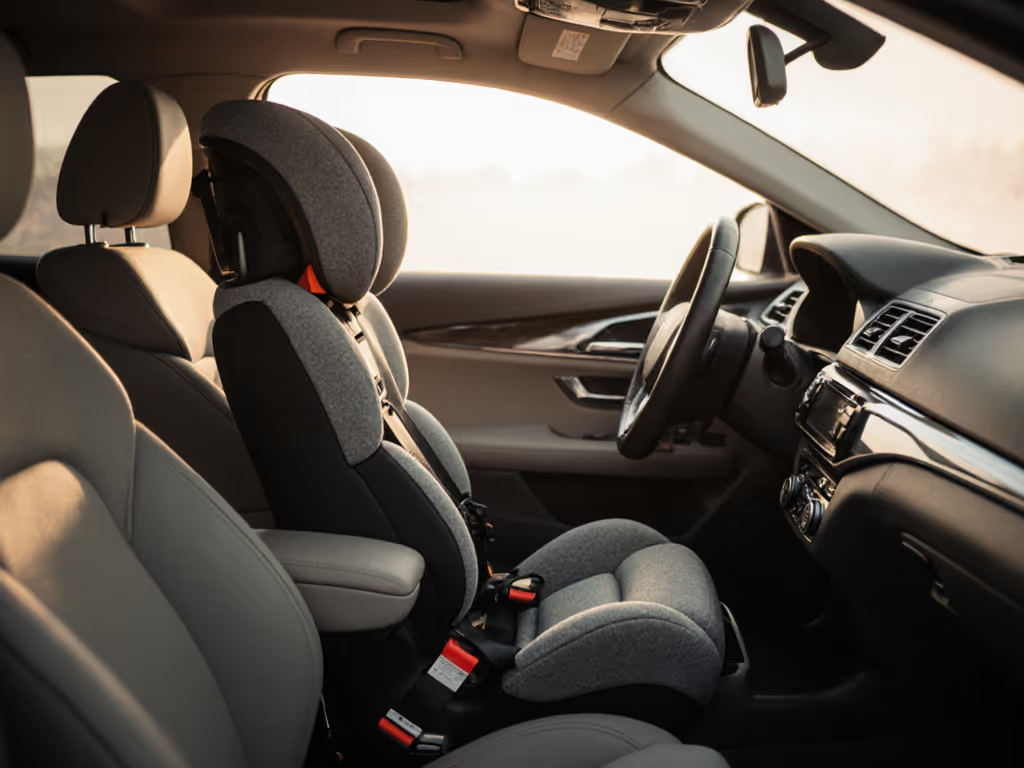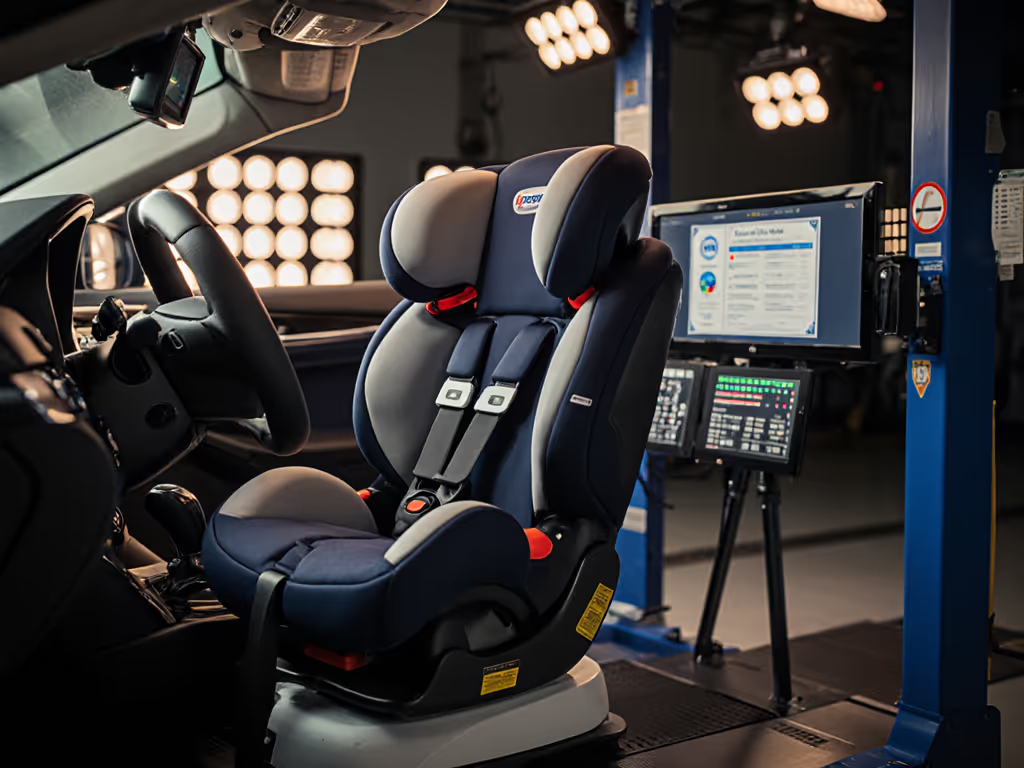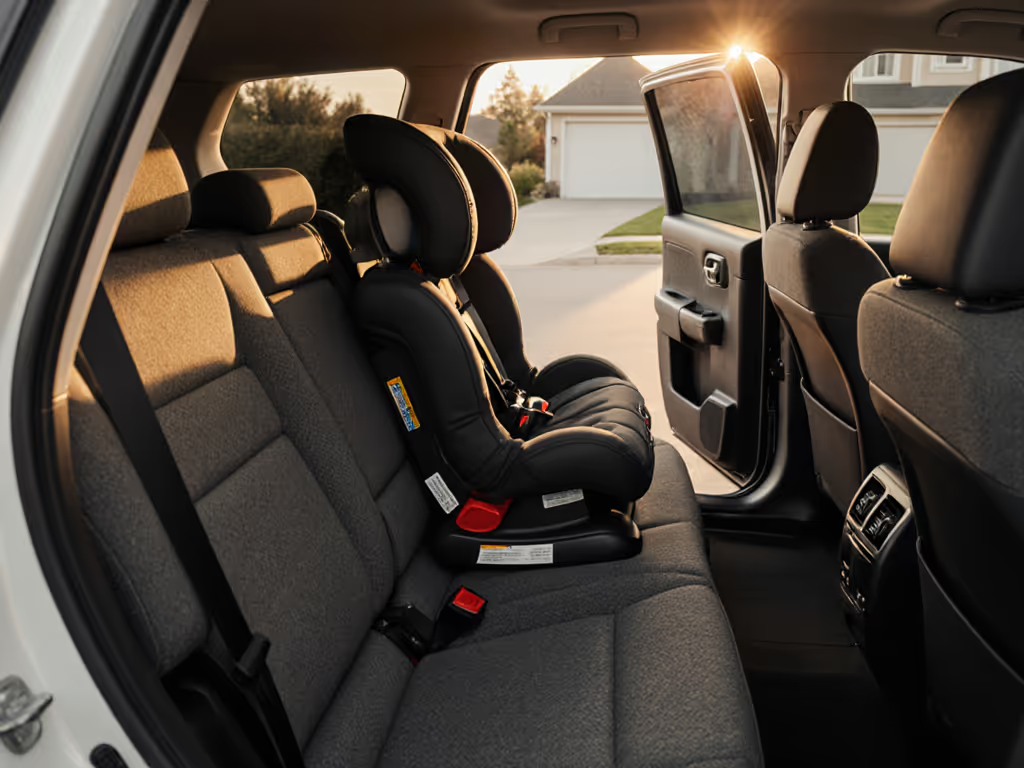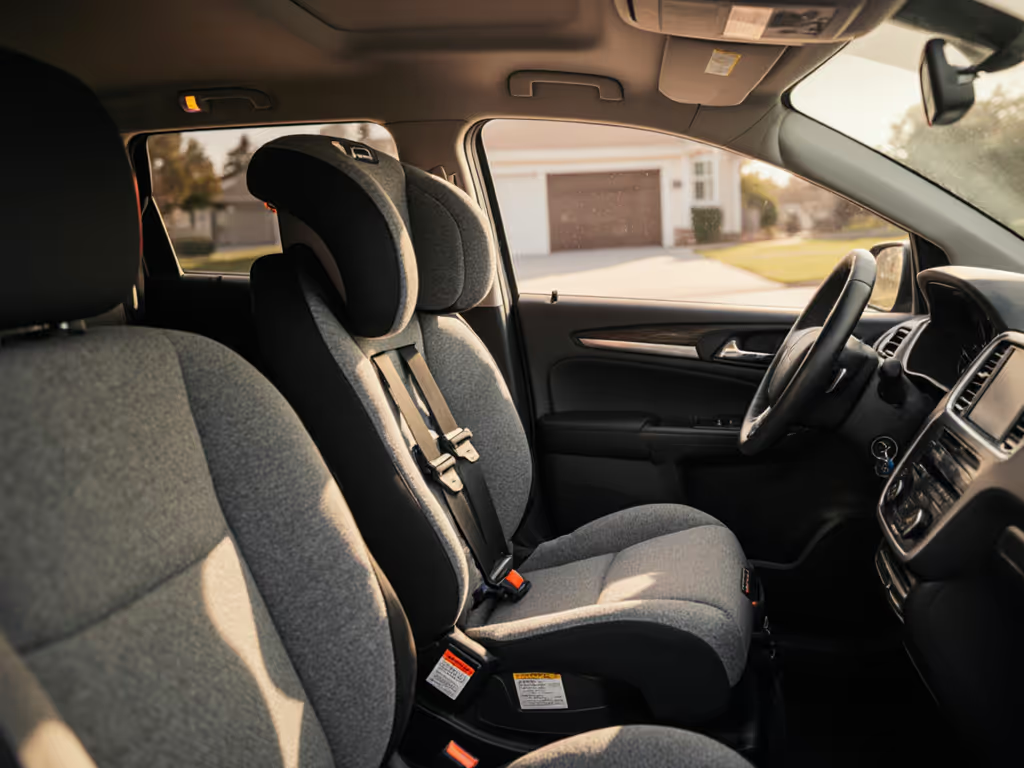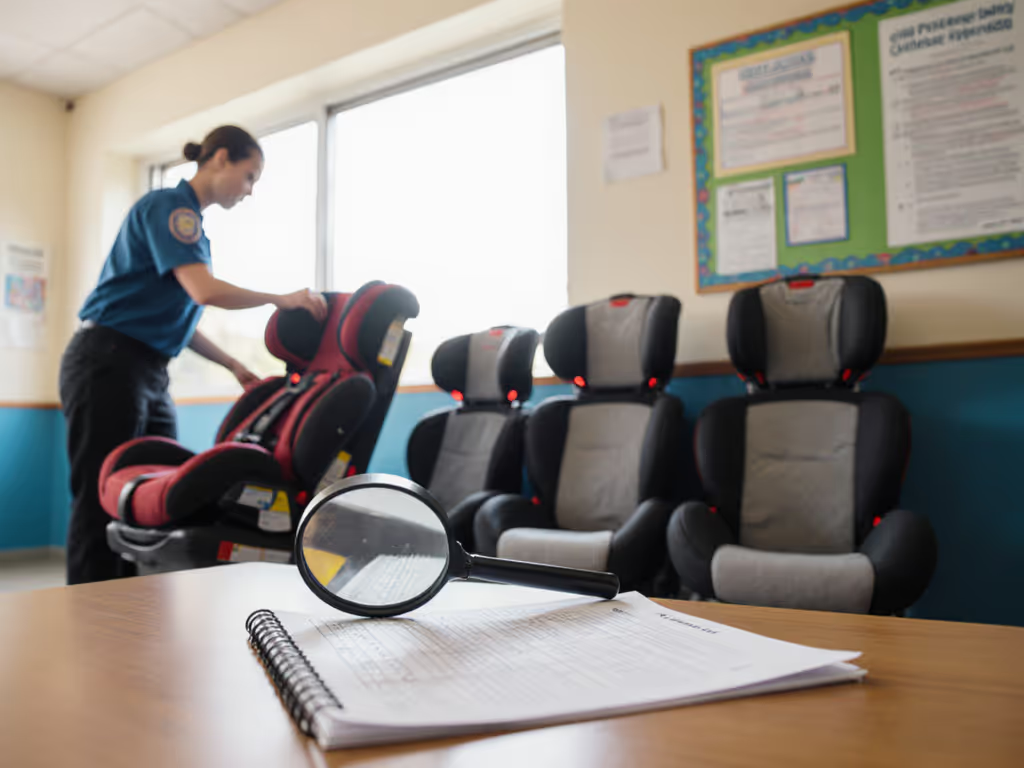
Car Seat Fitment Explained: Ensuring Perfect Safety
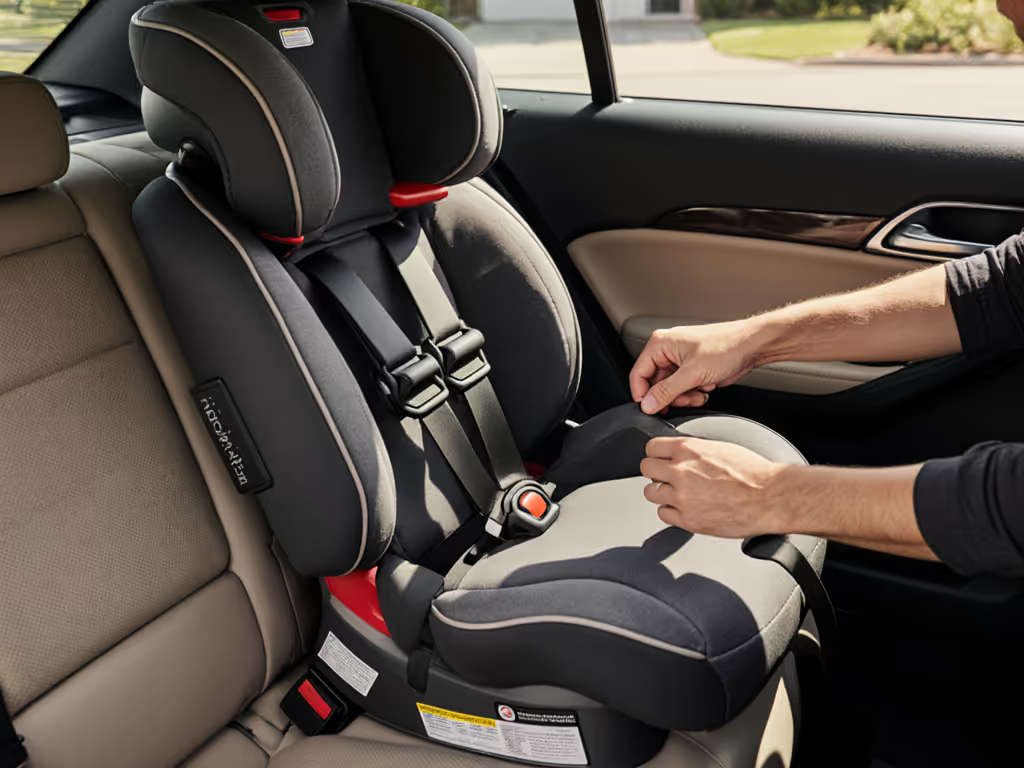
Every year, over 100,000 children are injured in car crashes, reminding us how vital proper car seat fitment remains for families everywhere. Protecting your child goes far beyond just picking a seat off the shelf. It takes smart choices, close attention to detail, and a commitment to up-to-date safety standards. Understanding the differences between car seat types, recognizing vehicle compatibility, and avoiding common mistakes can make a measurable difference in keeping kids safer on the road.
Key Takeaways
| Point | Details |
|---|---|
| Proper Car Seat Fitment is Critical | Understanding age-appropriate selection, precise installation, and correct harness positioning is essential for maximizing child safety during travel. |
| Convertible Car Seats Offer Versatility | Selecting convertible car seats that accommodate growth can provide effective long-term protection through various developmental stages. |
| Ongoing Education is Necessary | Parents must regularly reevaluate car seat compatibility with vehicles and stay informed about changing safety standards to ensure optimal protection. |
| Common Mistakes can Compromise Safety | Awareness of frequent fitment errors, such as incorrect harness adjustment and premature seat transitions, is key to preventing potential risks during travel. |
Core Principles of Car Seat Fitment
Protecting children during vehicle travel requires understanding and implementing critical car seat fitment principles. The stark reality is that motor vehicle injuries remain a leading threat to child safety, making proper car seat selection and installation paramount. Research demonstrates that correct car seat usage can reduce infant fatality risks by an astounding 71% and toddler fatality risks by 54%, underscoring the life-saving importance of getting these fundamentals right.
The core principles of car seat fitment revolve around several key components that ensure maximum child protection. These include:
- Age-appropriate selection: Matching the car seat precisely to your child's current weight, height, and developmental stage
- Precise installation: Ensuring the seat is tightly secured with minimal movement in any direction
- Harness positioning: Correctly adjusting straps to fit snugly against the child's body
- Rear-facing orientation: Maintaining rear-facing positioning as long as possible within weight and height recommendations
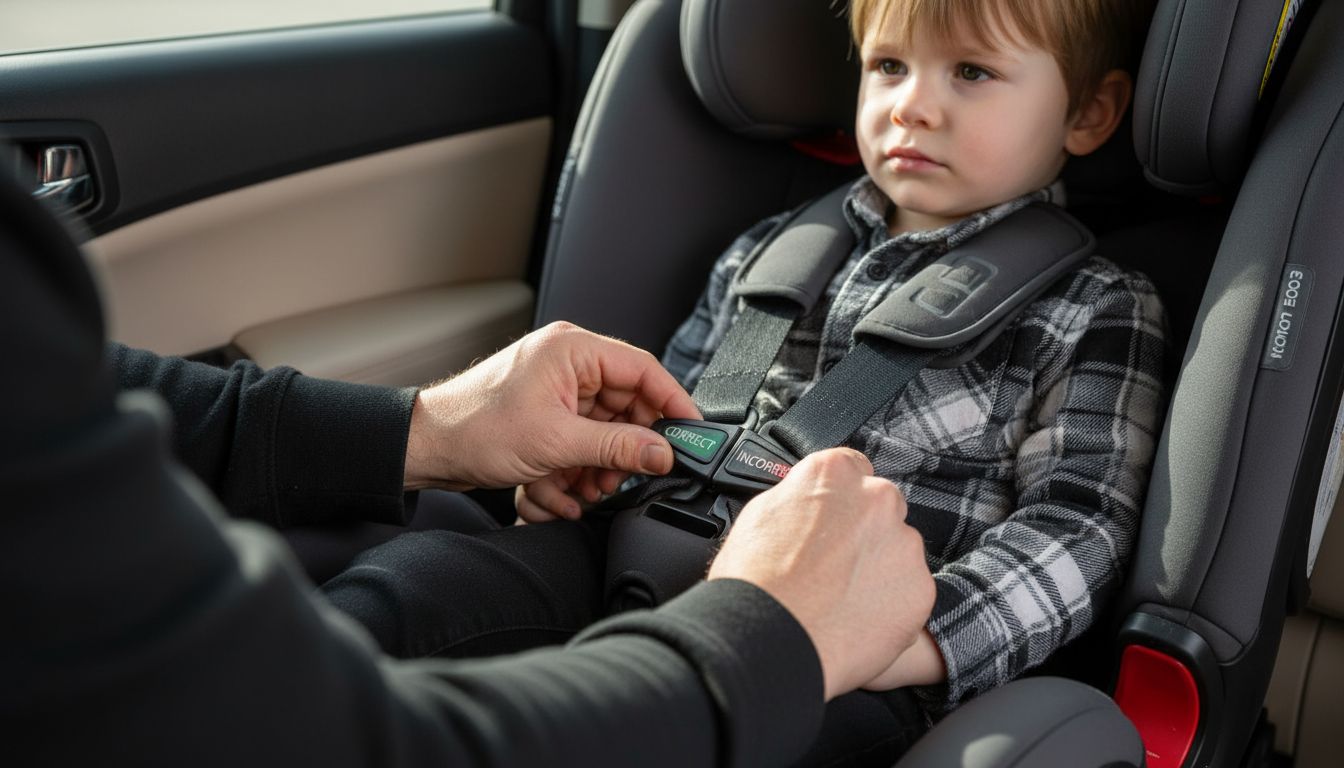
Beyond technical specifications, successful car seat fitment requires ongoing education and adaptation. Parents must consistently verify seat compatibility with their specific vehicle, understand changing safety standards, and remain vigilant about proper usage. Regular inspections by certified child passenger safety technicians can provide additional reassurance and help identify potential installation issues that might compromise a child's safety.
Types of Convertible Car Seats Compared
Convertible car seats represent a versatile solution for parents seeking long-term child safety and cost-effective transportation protection. Unlike single-stage car seats, these adaptable models can transition between rear-facing and forward-facing configurations, accommodating a child's growth from infancy through early childhood. Research indicates that convertible car seats come in multiple specialized types, each designed to address specific age ranges and safety requirements.
The primary convertible car seat types include:
Here's a comparison of the main types of convertible car seats:
| Car Seat Type | Suitable Age Range | Key Features | Maximum Usability |
|---|---|---|---|
| Type A2/B | Infants | Rear-facing only<br>Enhanced support | Early years |
| Type A2/B/E | Infancy to toddlerhood | Rear & forward-facing<br>Extra safety features | Multiple stages |
| Type A4/B | Transitional ages | Increased weight limit<br>Forward-facing capability | Extended use |
| Type A4/B/E | Up to 8 years | Longest usage<br>Multi-stage design | Comprehensive |
- Type A2/B: Suitable for younger infants, offering robust rear-facing protection
- Type A2/B/E: Extended usability with enhanced safety features for multiple developmental stages
- Type A4/B: Designed for transitional age groups with increased weight capacity
- Type A4/B/E: Comprehensive protection offering the longest potential usage, potentially extending up to 8 years
Selecting the right convertible car seat involves careful consideration of several critical factors. Parents must evaluate their child's specific measurements, vehicle compatibility, and anticipated growth trajectory. The most effective seats provide seamless adaptability, allowing smooth transitions between configurations while maintaining stringent safety standards. Professional recommendations suggest prioritizing seats with multiple adjustment points, robust side-impact protection, and intuitive installation mechanisms that minimize potential user errors.
Beyond technical specifications, the ideal convertible car seat represents an investment in child safety. By understanding the nuanced differences between seat types and staying informed about evolving safety technologies, parents can make empowered choices that provide comprehensive protection throughout their child's early developmental years.
Key Fitment Factors for Children and Vehicles
Vehicle compatibility represents the foundational cornerstone of effective car seat safety, creating a complex interaction between child restraints, vehicle design, and individual passenger characteristics. Selecting the right car seat involves more than simply matching a child's weight and height - it requires a comprehensive understanding of intricate fitment factors that directly impact protection and safety.
Critical fitment considerations include:
- Vehicle seat geometry: Analyzing the specific contours and attachment points of your vehicle's rear seating area
- Child anthropometrics: Precisely measuring your child's height, weight, and body proportions
- Seat belt configuration: Evaluating the specific anchor points and belt design in your vehicle
- Age and developmental stage: Matching seat features to your child's current physical development
Research emphasizes that transitioning between child restraint systems should prioritize height measurements over age. Experts recommend maintaining booster seat usage until a child reaches a minimum height of 148 cm, which ensures optimal protection during vehicle travel. This approach recognizes that individual growth patterns vary significantly, and a one-size-fits-all strategy can compromise child safety.
Successful car seat fitment demands ongoing vigilance and adaptation. Parents must regularly reassess their child's physical development, vehicle configuration, and emerging safety technologies. Professional child passenger safety technicians can provide invaluable guidance, offering precise measurements, installation techniques, and personalized recommendations that address the unique interplay between children, car seats, and vehicle dynamics.
Standards and Safety Compliance Essentials
Safety standards form the critical backbone of child passenger protection, establishing rigorous guidelines that manufacturers must meet to ensure maximum child security during vehicle travel. These comprehensive regulations go far beyond simple recommendations, creating a robust framework of testing, design specifications, and performance requirements that protect children from potential transportation risks.
Key safety compliance standards include:
- Isofix/LATCH standards: Providing universal attachment points for consistent car seat installation
- Federal Motor Vehicle Safety Standards (FMVSS 213): Defining specific crash test requirements and performance metrics
- Height-based transition guidelines: Recommending specific height thresholds for changing restraint systems
- Material and structural integrity requirements: Ensuring seats can withstand significant impact forces
International safety standards have evolved significantly, with recent updates reflecting advanced research and technological capabilities. The European Union, for instance, recently increased the recommended child restraint transition height from 135 cm to 150 cm, highlighting the nuanced approach to child safety that prioritizes physical development over arbitrary age classifications. These standards represent a dynamic, research-driven approach to protecting young passengers, continuously adapting to new scientific insights and technological innovations.
Navigation of these complex safety standards requires ongoing education and awareness. Parents and caregivers must stay informed about current regulations, understanding that compliance is not just about following rules, but about making informed choices that directly impact child protection. Professional child passenger safety technicians can provide invaluable guidance, helping families interpret these standards and select car seats that offer the highest level of protection tailored to their specific needs.
Common Fitment Mistakes and How to Avoid Them
Car seat fitment represents a critical safety challenge where seemingly minor errors can have profound consequences for child protection. Research consistently demonstrates that many parents unintentionally compromise their child's safety through common installation and usage mistakes, highlighting the need for comprehensive understanding and meticulous attention to detail during car seat selection and deployment.
The most prevalent fitment mistakes include:
- Incorrect harness positioning: Straps that are too loose or improperly adjusted
- Premature seat transitions: Moving children between seat types before they meet recommended size requirements
- Bulky clothing interference: Wearing thick winter jackets that prevent proper harness engagement
- Improper seat angle: Failing to maintain the correct recline position, especially for infants
- Expired or damaged seats: Continuing to use car seats beyond their recommended lifespan
Addressing these challenges requires a proactive approach to child passenger safety. Parents must commit to regular seat inspections, seek professional guidance from certified child passenger safety technicians, and stay informed about evolving safety standards.
Understanding that correct car seat use is complex and requires ongoing education can dramatically reduce injury risks and protect children during vehicle travel.
Ultimately, preventing fitment mistakes demands continuous learning and a commitment to prioritizing child safety above convenience. By developing a thorough understanding of car seat mechanics, staying current with safety recommendations, and approaching installation with meticulous care, parents can create a robust protective environment for their most precious passengers.
Ensure Your Child’s Safety with Perfect Car Seat Fitment
Understanding the critical challenges of car seat fitment can be overwhelming. From choosing the right convertible car seat type to ensuring proper harness positioning and adhering to up-to-date safety standards, parents face many decisions that directly impact their child’s wellbeing. Common concerns like avoiding premature seat transitions or improper installation put children at risk, making it essential to get expert guidance tailored to your child’s size, age, and your vehicle’s unique features.
At Fits for Years Seats, we help you navigate these complex decisions with clear, research-driven advice. Explore comprehensive guides on how to select and install car seats that meet regulations such as FMVSS 213, optimize comfort, and provide long-term safety. Don’t leave your child’s safety to chance — visit our site now to access personalized recommendations and ensure your car seat fits perfectly every year. Take action today for confident, worry-free travel by visiting Fits for Years Seats and start protecting what matters most.
Frequently Asked Questions
What are the key principles of car seat fitment?
The key principles of car seat fitment include age-appropriate selection, precise installation, harness positioning, and maintaining rear-facing orientation for as long as possible according to the seat's weight and height recommendations.
How do I ensure my car seat is installed correctly?
To ensure correct installation, make sure the car seat is tightly secured with minimal movement in any direction, and verify that the harness straps fit snugly against your child's body. It can also be helpful to have a certified child passenger safety technician inspect the installation.
What types of convertible car seats are available and their features?
Convertible car seats typically fall into categories such as rear-facing only, rear & forward-facing, and transitional models. Features vary, including enhanced safety options, increased weight limits, and multi-stage designs for extended usability.
What common mistakes should I avoid when installing a car seat?
Common mistakes include incorrect harness positioning, premature transitions between seat types, bulky clothing interference, improper seat angle, and using expired or damaged seats. Regular inspections and seeking professional guidance can help mitigate these issues.

